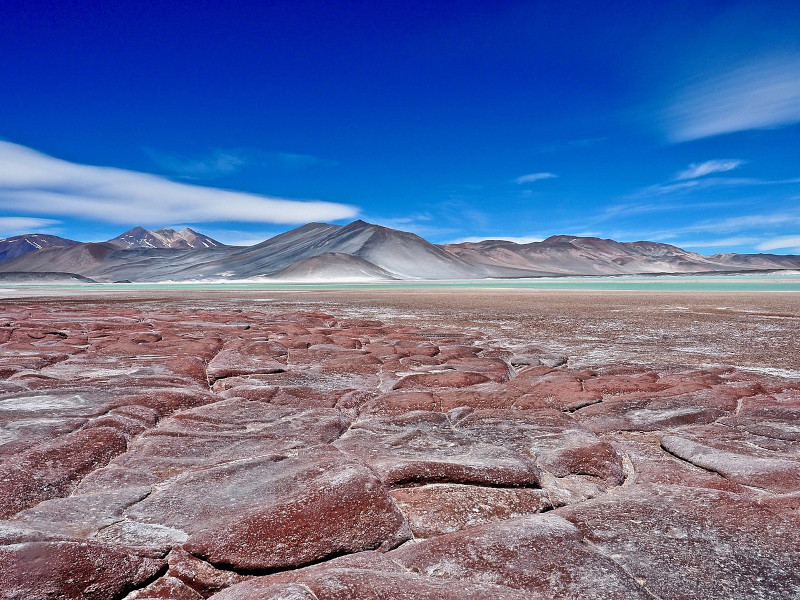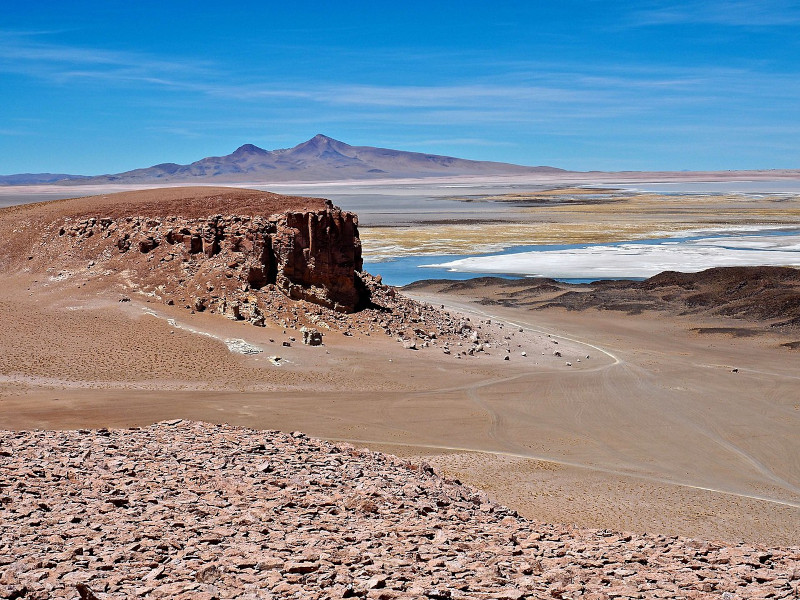Atacama Desert Facts
- In terms of desert-like features, the absolutely breathtaking Atacama Desert puts even other desert regions to shame! That holds true for several reasons, in fact. First and foremost, this stunning work of Nature ranks as the driest non-polar desert on earth.
- It bears noting that, by definition, a given region qualifies as a desert if its evaporation rate exceeds that of its rate of precipitation. That’s why certain polar regions qualify as deserts, to the surprise of many individuals, believing that desert areas must be hot.
- This wonder of Nature is also the oldest known desert on earth, by far. Evidence places its origins as far back in history as 20 million years, at least. Its extreme nature, as it exists today, however, appears to have only existed for around 3 million years, though.
- Yet its status isn’t earned simply due to this one factor. The stark section of the globe also qualifies as a unique variety of desert, known as a fog desert. That title’s earned when a desert region receives the majority of what little moisture it gets from fog drip.
- The distinctiveness of the fabulous, if stark, Atacama Desert does not go unnoticed or unappreciated by those who value Nature. As a result, portions of the site form a total of 3 protected areas. Sadly, though, these cover only a fraction of the regions total area.
- The sections set aside for protection form either National Parks or National Reserves. They bear the names of Pan de Azúcar National Park, Pampa del Tamarugal National Reserve, and La Chimba National Reserve. Other areas serve as experimentation sites.
Related Articles
Atacama Desert Physical Description
The magnificent Atacama Desert has a distincitve shape, in addition to its other outstanding features. That’s because this stark wonder of Nature has a highly elongated form. Although its edges are naturally irregular, it’s average measurement is roughly 10 times as long as wide.
More precisely, its average length measures nearly 700 mi (1,120 km). The average width, however, only equals approximately 60 mi (96 km). Both these dimensions vary, of course, due to various environmental factors, though rarely to any significant degree.
These average dimensions give it a total area of roughly 41,000 sq mi (105,000 sq km). Some accounts provide a slightly greater area, though, due to differences in definition. That’s due to the fact that the other calculations include the barren slope of surrounding mountains.
Much of the astonishing Atacama Desert has an otherworldy appearance. This holds true due to the existence of an unusual, and distinctive, combination of terrains. These include such varied features as salt lakes, stony terrain, ancient lava flows, and of course, sand.
Amazingly, its borders, of all things, qualify as yet another distinguishing characteristic. That distinction occurs because, firstly, on one side its bordered by not one but two mountain chains. And on the other side, to the amazement of many who see it, lies an ocean!
Atacama Desert Location, Formation, and Ecology
The awe-inspiring Atacama Desert did not form in a part of the world that most people would expect to find such an extensive desert region. On the contrary, most of the rest of the continent on which it formed remains widely known for its verdant nature.
That’s because this marvel of natural processes formed on what now constitutes the continent of South America. More precisely still, the fabulous site lies on the Pacific coast, slightly west of the mighty Andes Mountains, within the borders of the country of Chile.
The conditions which formed it arose, and are maintained by, a constant temperature inversion. This occurs due to the presence of the Humboldt ocean current, along with a powerful semi-permanent Pacific weather pattern, commonly known as an anti-cyclone.
The driest part of the region lies between the Chilean Coast Range and the towering Andes. Their great height prevents virtually all flow of moisture from either the Atlantic Ocean or the Pacific Ocean. This portion receives an average of only 0.6 in (15mm) of rain per year!
Despite the conditions, life found a way to survive here, and some even flourish. More than 500 species of flora call the region home. These mainly consist of various herbs, along with several small flowers. Several types of trees, and numerous succulents also appear.
Few species of fauna live in the Atacama Desert, but a few manage it, mainly along the fringes. These include insects, such as grasshoppers and beetles. A few types of scorpions and lizards also dwell in its confines. Amazingly, many birds live along the ocean coastline.
Features Sharing Its Region
Check out our other articles on 3 Captivating Caves of Asia, Finless Porpoise, Victoria Falls, Kerengga ant-like jumper, Death Apple Tree, Weedy Seadragon, Anegada ground iguana


